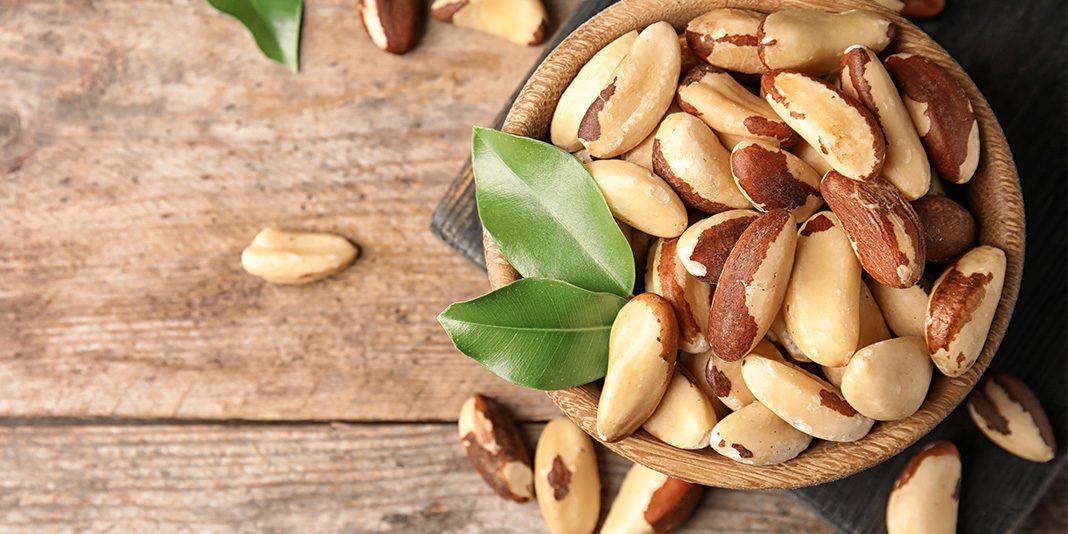A big part of my job involves diving daily into the latest research on food. Although the internet, TV and magazines have given people the tools to become “diet experts,” the truth remains that the strongest evidence we have on what to eat and what to skip come from the peer reviewed journals. This research helps us understand why and how a probiotic can affect gut health, why an orange may prevent mental decline and why whole grains may help to fight against certain cancers.
Research also provides us with insight into the darker side of food as well. Think just one fast food meal won’t affect your overall health? Think again, says science. Think that sugar isn’t as addictive as some drugs? Several studies would disagree with you.It’s hard to refute a strong study, and the harmful foods I see popping up in several studies are the ones I avoid all together.
Here are 5 foods that should vanish from your pantry and your plate:
1Fat-free or reduced fat foods
 When foods promise flavor without the fat, that falls into the category of what I like to call “foods that don’t make sense.” Take reduced fat peanut butter. When manufacturers remove the fat from peanut butter, they simply reduce the overall amount of peanuts—the healthy fat source—and replace it with sugar. Unlike fat, which has 9 calories per gram, sugar only has 4 calories per gram and zero fat, so manufacturers can say they’ve reduced both calories and fat. But consuming sugary foods can lead to insulin resistance and diabetes, as well as speed up skin wrinkling and sagging. In other words, you are better off eating the unaltered original version with only peanuts, which contains healthy monounsaturated fat and doesn’t boost blood sugar or affect insulin production.
When foods promise flavor without the fat, that falls into the category of what I like to call “foods that don’t make sense.” Take reduced fat peanut butter. When manufacturers remove the fat from peanut butter, they simply reduce the overall amount of peanuts—the healthy fat source—and replace it with sugar. Unlike fat, which has 9 calories per gram, sugar only has 4 calories per gram and zero fat, so manufacturers can say they’ve reduced both calories and fat. But consuming sugary foods can lead to insulin resistance and diabetes, as well as speed up skin wrinkling and sagging. In other words, you are better off eating the unaltered original version with only peanuts, which contains healthy monounsaturated fat and doesn’t boost blood sugar or affect insulin production.
In a nutshell (if you’ll pardon the pun): Go natural. In the case of peanut butter, it should have just one ingredient: peanuts.
2Meat and dairy from animals with unhealthy feed sources.
 I stopped eating red meat and chicken years ago, but I still consume fish, eggs and some dairy. So when I purchase these foods, the first thing I look for on the packaging is what the animals were fed. That’s because it matters whether an animal is corn-fed vs grass-fed: A 2010 study in the Nutrition Journal revealed that grass-fed beef was higher in omega-3 fatty acids, as well as precursors for vitamins A and E. Grass-fed beef was also found to have less fat than corn-fed beef. And then there’s the issue of antibiotics in our food sources and how consuming them can play a role in antibiotic resistance.
I stopped eating red meat and chicken years ago, but I still consume fish, eggs and some dairy. So when I purchase these foods, the first thing I look for on the packaging is what the animals were fed. That’s because it matters whether an animal is corn-fed vs grass-fed: A 2010 study in the Nutrition Journal revealed that grass-fed beef was higher in omega-3 fatty acids, as well as precursors for vitamins A and E. Grass-fed beef was also found to have less fat than corn-fed beef. And then there’s the issue of antibiotics in our food sources and how consuming them can play a role in antibiotic resistance.
Bottom line: Choose products from antibiotic-free animals fed a more natural diet. Going organic helps: A 2011 study in the journal Environmental Health Perspectives found that organic poultry farms had significantly fewer antibiotic-resistant bacteria than conventional farms.
3Self-serve frozen yogurt.
 If you’re looking for a healthy dessert that tastes like ice cream, it would seem that frozen yogurt fits the bill. Yet, even frozen yogurt can be loaded with fat and sugar and high in calories, especially when you add on toppings that range from candy to hot fudge. What’s more, some of these frozen yogurt establishments let you serve—or shall we say, over-serve—yourself, throwing portion control out the window. A 2006 study in the American Journal of Preventative Medicine showed that the size of the bowl and even the spoon influence how much food people serve and eat. The study participants were actually nutrition experts who, despite their expertise, unknowingly served themselves 31 percent more when given a large bowl and 14.5 percent more when wielding a large serving spoon.
If you’re looking for a healthy dessert that tastes like ice cream, it would seem that frozen yogurt fits the bill. Yet, even frozen yogurt can be loaded with fat and sugar and high in calories, especially when you add on toppings that range from candy to hot fudge. What’s more, some of these frozen yogurt establishments let you serve—or shall we say, over-serve—yourself, throwing portion control out the window. A 2006 study in the American Journal of Preventative Medicine showed that the size of the bowl and even the spoon influence how much food people serve and eat. The study participants were actually nutrition experts who, despite their expertise, unknowingly served themselves 31 percent more when given a large bowl and 14.5 percent more when wielding a large serving spoon.
Bottom line: Have less of the real thing. One serving of ice cream is a better choice than three servings of toppings-laden frozen yogurt.
4Fiber bars
You already know that fiber is good for you in many ways: Research shows that high-fiber diets are associated with lower total blood cholesterol, less constipation and even weight loss. In fact, eating a high-fiber meal at breakfast helps you eat less all day. Fiber is naturally found in plant-based foods such as fruits, vegetables, legumes and whole grains, but in an effort to go for what seems like the more convenient—and in some cases, tastier—option, many consumers are reaching for a fiber bar instead. But fiber bars are often candy bars in disguise: full of sugar, high maltose corn syrup, honey, palm kernel oil and/or fructose. The fiber is usually added in, which allows manufacturers to label the product as high in fiber, making it look like a healthy option.
Bottom line: Grab an apple. It’s just as convenient as a bar, and it’s rich in fiber without the extra sugar and calories.
5Specialty coffee drinks
I love starting my day with a freshly brewed cup of coffee. As a bonus, multiple studies show that regular coffee consumption comes with several health benefits—even reducing a person’s risk of dying from heart disease, stroke, diabetes, or infections. The trouble starts when people add those extra ingredients—high-fat milk products and sugary syrups—to their cup of coffee. Case in point: A large flavored latte contains 300 or more calories versus a large plain coffee, which has a mere 5 calories (even adding a 1?2 cup of skim milk, you’re still only looking at less than 50 calories). It’s those empty calories that add up and can contribute to weight gain over time.
Bottom line: Stick with skim cow’s, almond or soy milk in your coffee and pass on the sugary syrups and whipped cream.



































